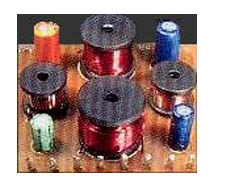
Magical Passive Crossovers
Passive crossovers of higher order than 12 dB/octave can be made but are difficult to construct.
Most are inefficient and inaccurate, regardless of the academic theory that describes them as being superior.
The more complex a passive crossover, the more energy is required from the amplifier for it to function. This increases insertion loss which generates distortion that often outweighs the benefits.
Early research, referred to “transient distortion” as the major problem of passive crossovers greater than 12 dB/octave.
Early audiophiles only accepted first order crossovers, claiming this has least effect on coloring the music. Their descriptions were “1st- and 2nd-order crossovers allow the sound to be open whereas higher order crossovers cause the sound to be closed.”
Recent audiophile trends are for very complex passive crossovers, greater than 12 dB/octave that use magical Capacitors. The larger the number of magical Capacitors, the more magical the sound becomes.
These passive crossovers attempt to adjust for time alignment and Impedance variations within each loudspeaker.
Often only the designer can hear the difference which becomes self perpetuating to justify the design time spent and the cost of magical components.
In almost every case (there are exceptions) where these magical crossovers are replaced with a straightforward 12 dB/octave crossover, the system springs to life. However active crossovers cannot be generalized in this way.
John Lenard Burnett is the founder of and product designer at Lenard Audio, a design and consulting company specializing in electro-acoustic engineering. He also has created the Lenard Audio Institute, an on-line educational resource.
